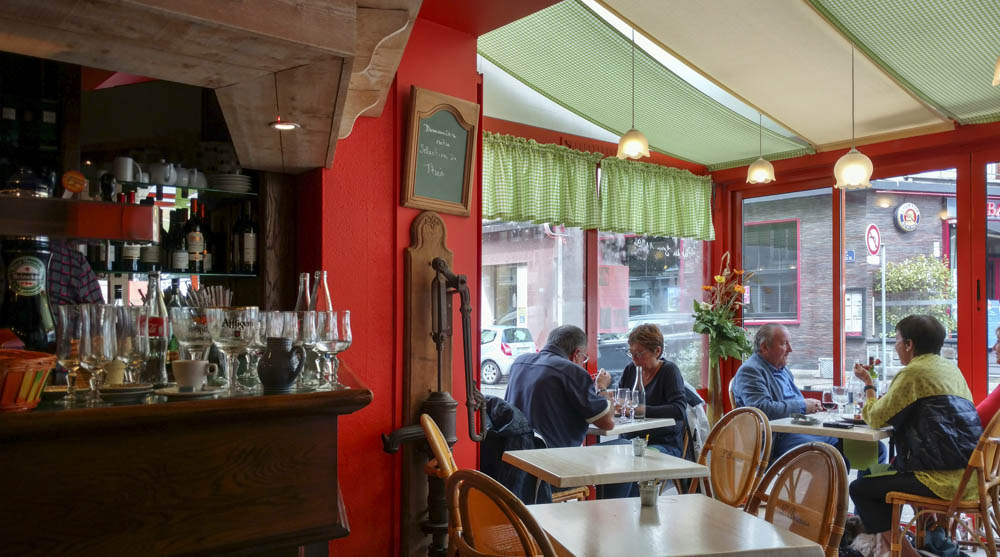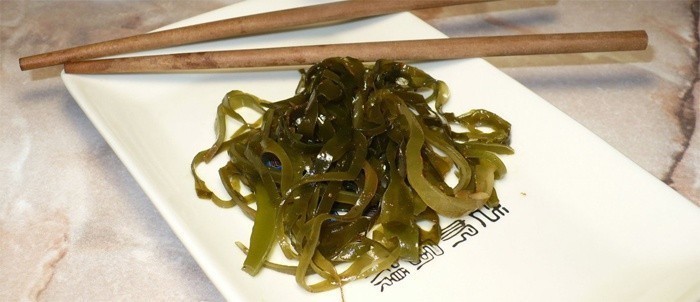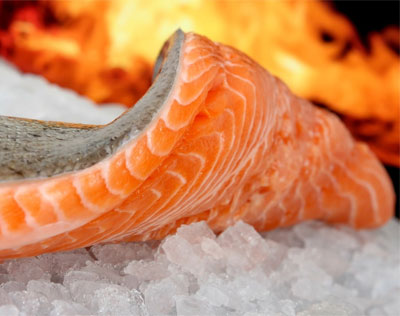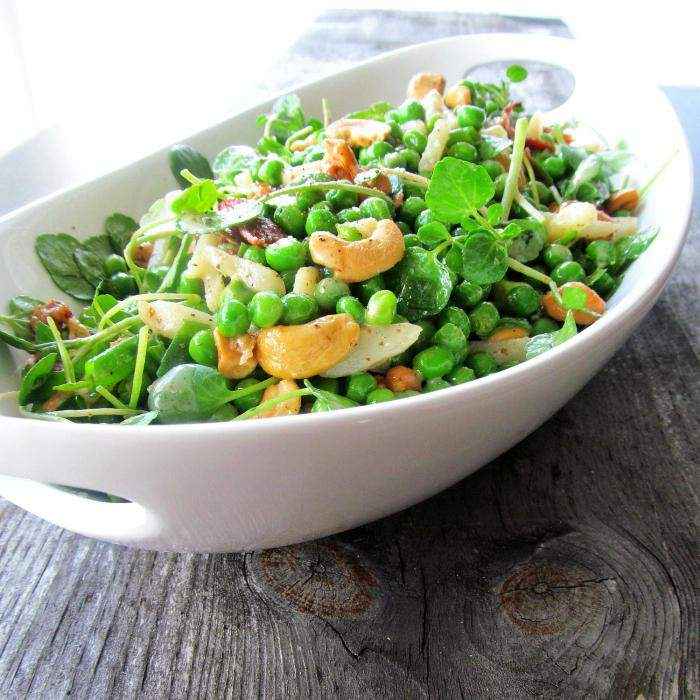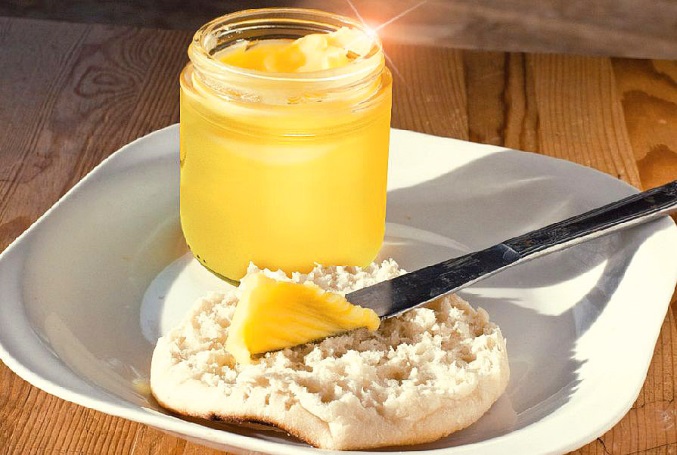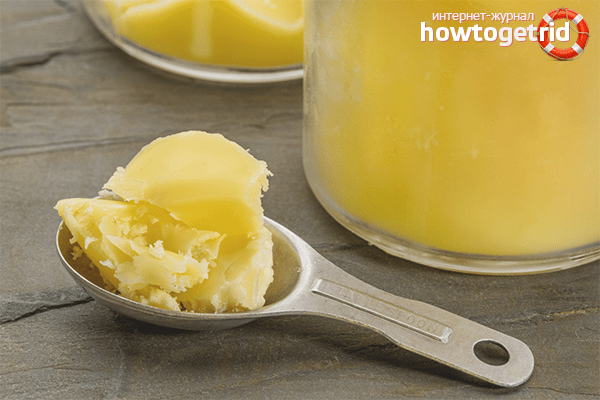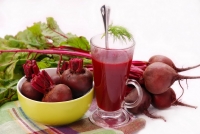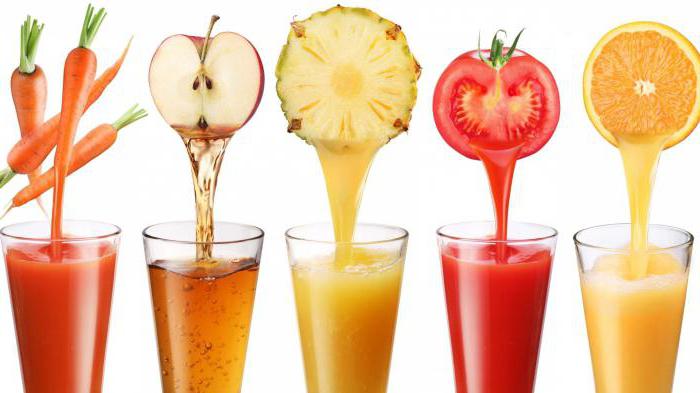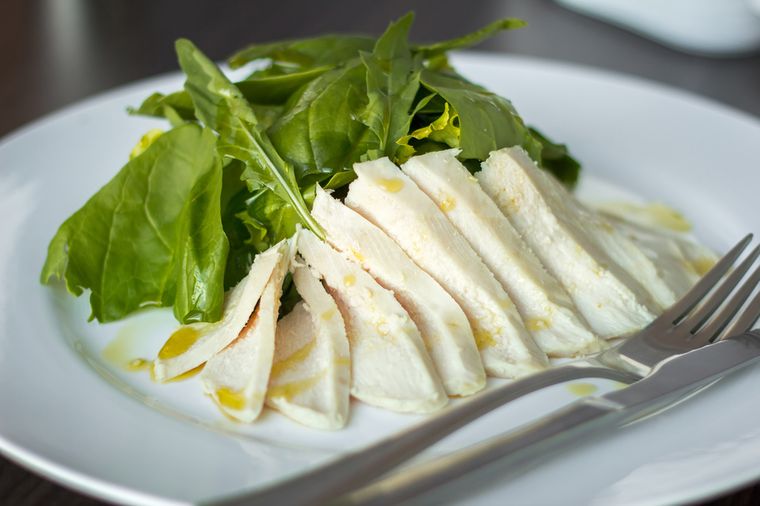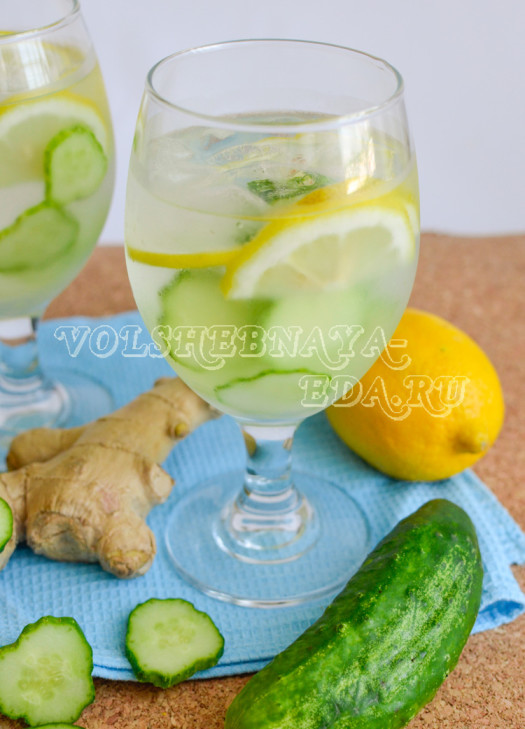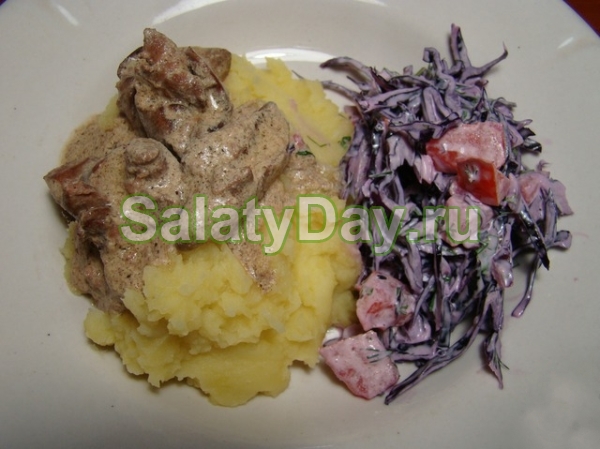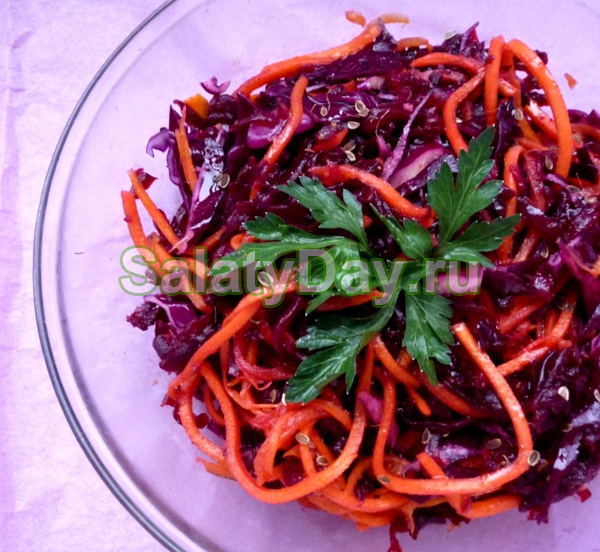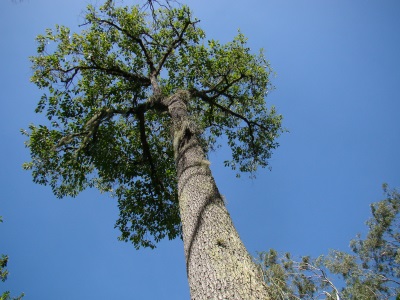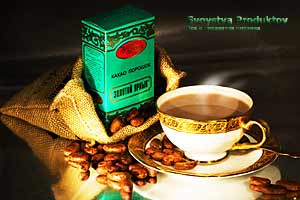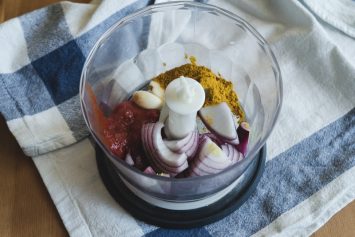Strong spirits. Strong drinks: how to drink
Alcoholic drinks with the right approach give excellent opportunities for relaxation after a hard day. This page provides a list of alcoholic beverages that are traditional for different countries of the world. This list of the names of alcoholic beverages is far from complete and it lacks more than a hundred different types of alcohol. But the most popular alcoholic drinks in it are presented even with brief descriptions, thanks to which you can make your own first impression. This will help to assemble your own “wine list” for planning a subsequent tasting. All names of alcoholic beverages are given exactly in the form in which they are familiar to the vast majority of people. Read about common types of alcoholic beverages, find out about their beneficial and harmful properties. Choose for yourself the type of alcoholic drink that will allow you to get the most out of drinking it with minimal negative health effects. Well, look at the alcoholic drinks in the photo, which the article is richly illustrated.
Classification of various traditional alcoholic beverages
Alcohols - These are organic substances, which are a chain of carbohydrates, where one hydrogen molecule is replaced by the remainder of the OH water. The classification of alcoholic beverages begins with the fact that there are alcohols: ethyl, methyl, propyl, butyl alcohols.
Food Ethyl Alcohol for traditional alcoholic beverages, they are obtained from food raw materials - grains, potatoes, as well as from secondary raw materials of winemaking (grape marc, yeast precipitation).
Technical methyl alcohol extremely toxic, smell and taste does not differ from ethyl. He has counted hundreds of thousands of human lives (accidentally drunk 100 ml of methyl alcohol leads to complete blindness due to toxic damage to the optic nerve, a larger amount causes death).
Propyl and butyl alcohols not so toxic, but have a specific smell, which led to their name - fusel oils. Their content is great in moonshine, poorly purified vodka. Therefore, when we say alcohol or alcohol, we mean only ethyl (or wine) alcohol.
Rectified Ethyl Alcohol (Ethanol)intended for different alcoholic beverages can be ordinary or higher purification. The strength of ordinary alcohol is at least 95.5%, and the highest purity is not lower than 96.2%. It is the starting material for the preparation of popular alcoholic beverages such as vodka and fortified wine.
Ethanol (95.5% or 70%), which has undergone thorough purification, is used in medicine.
List and classification of spirits
The following is a list of spirits that are frequent guests on the tables of our compatriots. This classification of spirits is generally accepted and gives a general idea of \u200b\u200bthem. Look at what strong alcoholic drinks are and decide on your choice.
Strong white alcoholic drink: vodka and tequila

Vodka - This is a strong alcoholic drink (40-56%), which is prepared by treating activated carbon with a water-alcohol solution, with or without the addition of ingredients, followed by filtration. Simply put, vodka is a mixture of rectified alcohol with prepared water. Ethyl alcohol is mixed with water in any ratio.

Mexican Vodka - This is tequila, an alcoholic beverage obtained by distillation of an extract of the same name cactus.
Even D.I. Mendeleev calculated the ideal proportion of vodka as an alcoholic beverage with a percentage of 40: 60, that is, a 40% alcohol solution, which is the most homogeneous mixture, is most easily absorbed and gives the person more heat. Not for nothing that vodka made in this way has long served not only gastronomic purposes, but also therapeutic.
Studies by American and German scientists led to the conclusion that the normal dose of a white alcoholic drink for an adult man is up to 100 ml of alcohol per day in terms of vodka, and for a woman, it is almost 2 times less. Moreover, this dose is not cumulative during the week (for example, if a person has not drunk for a whole week, then half a liter for one on Saturday will only bring him harm, in the best case - a severe headache).
If a person can limit himself to this dose, then he can drink alcohol for many years without harm to his health. At the same time, one must give oneself the installation that these self-restrictions are not a forced prohibition, but a wise distribution of pleasure: after drinking a little today and having fun, you can do it tomorrow, and the day after tomorrow, and after many, many years in the future. If you do not do this, then you will have to face very big problems in a fairly short time.
English alcoholic drinks: scotch and gin

Gin - a strong alcoholic drink obtained by mixing raw alcohol with essential oils of juniper berries, coriander, cardamom, caraway seeds, ginger, cinnamon. The alcohol content in this English alcoholic beverage is 40-50%. Gene is colorless. Although gin is produced in many countries, there are two types of gin - Dutch and London dry.

Scotch - This is an alcoholic beverage of increased strength and is also traditionally produced and consumed in England and its surrounding territories.
Whiskey Alcoholic Drink
Whiskey - a strong alcoholic drink with an alcohol content of 40% or more, which is obtained by distillation of the fermented grain wort, followed by a long exposure (3 to 10 years) in oak barrels with charred walls.

The word "whiskey" comes from the Celtic name of this drink - "water of life."
Whiskey is the national drink of the Anglo-Saxon countries. The production of whiskey is especially developed in the UK, Ireland, USA and Canada.
Rum Alcoholic Drink
Rum - a strong alcoholic drink obtained by extracting rum alcohol in oak barrels. Rum alcohol is produced from fermented sugarcane juice, cane syrup, cane sugar molasses and other by-products of cane processing.

The resulting alcohol is poured into oak barrels and aged for 5 years. During aging, aromatic, coloring and tanning substances pass into alcohol. Rum acquires a brown color with a golden hue and a slightly burning taste. The alcohol content in the final product is below 95%.
Alcoholic drink cognac and brandy

Cognac - a strong alcoholic beverage made from brandy alcohol, which is obtained by distillation of grape wines, followed by aging distillate in oak barrels. Fresh cognac alcohol is colorless, slightly aromatic and sharp in taste. Cognac matures extremely slowly.

Brandy - a strong alcoholic drink obtained by distillation of any fortified juice of fruits or berries, followed by aging. In many countries, brandy made from apples - calvados, from plums - plum brandy, from cherries - kirsch, from pears - William is known.
Brandy from grape wines does not require any clarification for the inscription on the sticker. Fruit brandy should be accompanied by appropriate explanations (apple brandy, apricot brandy, etc.).
Raw materials for brandy do not undergo thorough purification, as for cognac or vodka, and retains a fruity aroma. Brandy is aged both in oak barrels, charred from the inside (to improve the taste), and in other containers.
Before use, brandy is diluted and taken, usually after a meal. Also used as an ingredient in many cocktails. Strong brandy (80-90%) in undiluted form is not used at all.
In the gastronomic tradition, cognac and brandy are used as a digestif, since they promote digestion (from the Latin word digestivus, which translates as a digestive aid).
A large healthy man (90 kg) to enjoy 100 ml of brandy is enough. A large dose will not give more pleasure and only cause nonsense.
Green alcoholic drink
Weak alcoholic beverages in the form of liquors are prepared with rectified alcohol, alcoholized fruit and berry juices, infusions of herbs, seeds, flowers, sugar syrup, dye solutions and other substances. These products, in addition to the liquor itself, include drinks such as balm, gin, whiskey, rum.

Liquor - it is a strong, sweet and spicy alcoholic drink of green color, made from alcoholized juices, infusions of fruits or herbs, sugar syrup, aromatic infusions, etc.
Alcoholic drink tincture
An alcoholic beverage tincture is prepared on alcoholic infusions of spices and medicinal herbs, roots, fruits, essential oils, which give it a strong pleasant aroma.

Tinctures have a tonic effect on the body. Excite your appetite. Alcohol content - 30-60%
They are used mainly as flavorings of all kinds.
Grape Alcoholic Drink Wine
Wine - This is probably the oldest alcoholic beverage, which over the centuries of its existence has found its own unique world, painted with many colors, shades of taste and aroma.

According to the method of production and composition of wine, both alcoholic drinks are divided into dining rooms, fortified (strong and dessert), flavored and sparkling.
Most natural wines are dry. They are called so because all the sugar they contain is “dry” fermented into alcohol. There are natural semi-dry or semi-sweet wines in which sugar still remains - due to the natural characteristics of a particular grape variety.
As can be seen from the table, ethyl alcohol in dry grape wines contains from 9 to 16%. But wine is not diluted alcohol. Grape wine, especially red, is a source of biologically important substances, the entry of which into the body with other food products is limited or impossible.

According to the famous French doctor Louis Pasteur, wine can be considered as the healthiest hygienic drink (of course, if not abused). But still, this is an alcoholic drink, which, one way or another, is a stumbling block: to recover or to sleep? A legitimate question arises as to how much wine to drink for health benefits. Of course, it's all about the dose.
It is believed that the consumption of wine in an amount of 5-7% for men and 2-4% for women of the daily calorie intake, subject to a balanced diet, does not negatively affect the body.
Doctors found that with moderate consumption of natural wine, the risk of cardiovascular disease is reduced by up to 35% and mortality due to coronary insufficiency is reduced to 15-60%. Two glasses of natural red wine compensate for the harm done to the vessels by smoking one cigarette. In addition, drinking wine reduces the risk of cancer. It is proved that red wine inhibits the development of leukemia, cancer of the skin, breast, prostate.
However, it must be remembered that regular intake of wine in large quantities is fraught with alcoholism. Despite the fact that alcohol treatment can significantly improve health and at the same time give pleasure, you still need to approach this problem with an absolutely sober head.
The healing effect of light alcoholic beverages
The practice of treatment with light alcoholic drinks has very ancient roots, this problem remains very relevant at present. Scientists from many countries have studied and are studying the effects of alcoholic beverages on the human body. Many serious studies have been conducted, the results of which often surprised the scientists themselves. So, it turned out that people who regularly drink small doses of alcohol (for example, a small glass of cognac or a glass of dry wine per day) are sick less and live longer than strict teetotalers. So, this reduces the risk of atherosclerosis and coronary heart disease to 40%. Moreover, only natural alcohol - wine, cognac, whiskey, grappa, chacha - has such a protective effect, in general, drinks obtained by conventional distillation. The whole point here is the natural microimpurities that remain after distillation, but are no longer contained in pure alcohol. They provide a powerful protective effect of natural alcoholic beverages.

Wine, as well as strong alcoholic beverages, is recommended for general strengthening of the body, as a painkiller, relaxing and soothing agent. Of course, everyone knows the antiviral and bactericidal effects of alcoholic beverages. For example, pathogens of cholera, typhoid fever, paratyphoid, polio viruses die in wine, even diluted, after 10-30 minutes. So a glass of good natural wine or cognac is an effective prevention of all kinds of infectious diseases and intestinal disorders.
The most positive effect of natural alcohol on brain activity. For example, a study by American scientists showed that older women who drink a little alcohol every day (a glass of wine, a glass of beer or a glass of brandy) are less likely to suffer from age-related impairment of brain function than teetotalers. They have memory problems and other mental disorders about 20% less likely than non-drinkers.

A glass of cognac or a glass of wine can also reduce insulin levels and increase the sensitivity of cells to it. Prior to the invention of insulin, for the treatment of diabetes mellitus, for example, mainly alcoholic beverages were used, most often strong wine.

Cognac and wine also help to lose weight by stimulating the secretion of the gallbladder and accelerating the digestion of fats. In general, alcohol in small doses remarkably activates digestion, food is better absorbed, and toxins and waste are removed from the body on time.
Natural alcoholic beverages are especially beneficial for women during and after menopause. It is during this period, due to a sharp decrease in the level of female hormones of estrogen, that the risk of developing atherosclerosis and cardiovascular failure increases. And small doses of alcohol stimulate the production of estrogen by the adrenal glands, thereby supporting the protective functions of the female body.
Alcohol, which contains more than 20 degrees, is considered a strong drink. Around the world there are a huge number of alcohol products with high strength. These include vodka, cognac, brandy, whiskey, sake, tequila, calvados and others. All of them are simply impossible to count. Some of them can be used in pure form, and others - only as part of cocktails.
Gene Bombay Sapphire Fortress 47%
Jin opens the ten most strong alcoholic drinks in the world. Translated into Russian, the word jin means "juniper." The general name of drinks of this kind is directly related to their composition, since they insist on juniper. The strongest grades have 40 degrees and above. (“Bombay Sapphire”) is an English gin that is one of the strongest of its kind. With a strength of 47%, it is used both for making cocktails and is used in its pure form, preferably with ice. Despite its strength, Bombay Sapphire has a mild flavor with pronounced notes of juniper, orange and lemon.
Armagnac Domaine de JaulinFortress 48.3%

Armagnac is one of the ten most strong drinks in the world and is a relative of cognac. It is produced directly in France. One of the strongest is considered armagnac Domaine de Jaulin ("Domain de Jolen") 1973 with a fortress of 48.3%. It was made at the Domaine de Jolen estate by the Darroz family. Armagnac was aged in oak barrels for 37 years, and then in 2010 it was poured into glass containers for sale. The French drink has a unique taste and barrel strength, as it did not go through cold filtration and was not diluted. The fragrance of Domaine de Jaulin combines notes of coffee, tobacco, fruit and oak. It is recommended to use it in its pure form, without a snack, in order to feel the full saturation of taste.
Grappa GRAPPA Agricola Bepi TosoliniFortress 50%

Grappa - One of the strongest alcoholic drinks from Italians. It is made by distilling grape cake, as well as its stems and seeds. One of the most fortified varieties is GRAPPA Agricola Bepi Tosolini (Bepi Tosolini) containing 50% alcohol. This drink has a crystal clear color and a pleasant aroma with pronounced notes of berries and raisins. Leaves a slight aftertaste of fruit.
Whiskey Glenfarclas 105 Fortress 60%

Whiskey is considered one of the noblest drinks of all time. Its average strength is 43 degrees. But some varieties may contain more. For example, scottish whiskey Glenfarclas 105 (Grenfarklas), whose fortress reaches 60%, is the strongest in the world. It is used both in pure form and as the basis for cocktails. The drink is made from cereals and yeast with the addition of water. Its original taste is formed primarily due to the wood barrels in which it maintains its strength. Whiskey is more preferred by the Americans and the British.
Fortress 67.5%

Beerwith the name Snake venom (“Snake venom”) and a fortress of 67.5% broke all the records for fortress among drinks of this kind. The authors of the fortified beer were Scottish producers who released this drink in 2013. Despite the high degree, “Snake venom” has a hop-malt, pleasant and slightly spicy taste. Manufacturers warn that the product should be drunk in small portions, like all fortified drinks such as cognac and whiskey.
Fortress 70%

It is a national drink of Georgia and is not inferior in degrees to the most fortified varieties of alcohol. Its strength in diluted form reaches 70% - it is with such maximum strength that this type of alcohol goes to the store shelves. For the manufacture of this chacha, only immature grapes of Isabella and Kacic are taken. Alcohol has a strong taste with hints of grape.
Fortress 75.5%

Rum It is also considered one of the most fortified drinks in the world. It is made by fermentation and distillation of cane syrup and molasses. One of the strongest representatives of this line of alcohol is rum Bacardi 151("Bacardi") from South America, which contains 75.5%. It is maintained for 8 years, so the Bacardi 151 gets its original taste and astringency. The drink is most often consumed in the form of cocktails, but there are also daredevils who drink it in its pure form. Rum has an amber color and combines notes of vanilla and oak. Bacardi has about 300 awards and is the most titled rum in the world.
Fortress 85%

Jacques senaux Black ("Jacques Hay Black") is considered one of the strongest absinthe in the world, the production of which is established in Spain. It got its name from the world famous French taster and blender Jacques Senot. In 1915, the production of this drink was stopped in France, as it was equated with a strong hallucinogen. But in 1956, the son of the blendist Juan Teixenne Seno decided to open his factory in Spain in order to restore the production of the drink according to his father’s prescription. This product, containing 85% alcohol, has a fresh and bitter aroma with hints of anise and wormwood.
Fortress 95%

It is accepted that liqueur is a sweet fortified alcoholic product with a high sugar content, which is found in berries and fruits used for its preparation. Usually its strength is not more than 35 degrees. But, as it turns out, there is liquor in the world, the fortress of which breaks all records. He is Everclear - The strongest liquor in the world from American manufacturers, which fell into the Guinness Book of Records. The drink is also referred to as "devilish water." Its peculiarity is that with an alcohol content of 95% it has neither taste nor smell. It is mainly used as the basis for the preparation of cocktails, since in its pure form its use is extremely dangerous. It is noteworthy that the sale of Everclear was banned in 13 US states due to its detrimental effect on the body.
Vodka Wratislavia SpirytusFortress 96%

Vodka is one of the most fortified alcohol products. Usually its strength does not exceed 40-45 degrees. However, in Poland, they invented vodka Wratislavia Spirytus (Bratislava Spiritus), which is considered one of the strongest drinks in the world with a content of 96% alcohol. The main ingredients in the manufacture of the alcohol product are wheat and potatoes, which give Wratislavia spirytus original taste. Vodka has crystal transparency, thanks to a thorough and multi-level purification from harmful impurities. The drink is not recommended to be used in its pure form, since it can cause irreparable harm to health. In diluted form, vodka has a pleasant and mild taste.
Absinthe
|
 Tokai Port ( english port port. porto him. portwein). This is a traditional Portuguese drink, which is a fortified grape wine with a strength of about 17-20 degrees. Port wine is a “serious” drink, as it has the category of “name controlled by origin.” Madera ( port. madeira). This is another variation of Portuguese fortified wine. This medium alcohol product usually has a strength of about 20%. A feature of Madeira is the aging of wine material at high temperatures from 60 to 80 ° C. Jerez ( english sherry spanish jerez, port. xerez). A very interesting medium-alcoholic beverage produced in Spain through the fermentation of grape must with a film of the so-called fleur, a type of sherry yeast. The alcohol content in this type of wine is about 20%. Marsala ( ital. marsala). If you believe the words of Admiral Nelson, then this is "a wine worthy of the meal of any very picky lord." Moreover, the lord should be very persistent, since the fortress of Marsala is about 17-18%. This strong dessert wine, originally from Italian Sicily, is somewhat similar to Madeira, but has a higher sugar content. spanish málaga). Refers to dessert wines, which are the merit of the inhabitants of the Spanish province of Malaga. The strength of the drink varies between 13 and 22%, and the separate fermentation of three different types of wort in various ways is considered a feature of its production. english tokai, hungarian tokaji). Experts highlight this wine, made in Hungary and Slovakia, as a separate type of alcoholic beverage. Tokaya fortress is about 10-12%, and its characteristic honey bouquet cannot be found in any wine existing in the world. ( english vermouth ital. vermut fr. portwein, him. wermut). His creation is attributed to Hippocrates himself, who was "treated" by them in the 5th century BC. Vermouth is a fortified wine (16-18%), flavored with various herbs and medicinal plants, where wormwood plays a major role. The primacy in the creation of vermouth belongs to Italy, and France is on its heels today. english cider fr. cidre him. apfelwein). This low alcohol drink (from 2 to 7%) is produced by fermenting apple juice without adding yeast. The peculiarity of cider is its obvious champagnization. France (Brittany and Normandy regions) distinguished itself as the creator of the highest quality ciders. Perry ( english perry fr. poiré, him. birnenmost). By the principle of production and features it resembles cider, but it is based on pear juice, and the level of sugar perry is much higher. The alcohol content is from 5 to 8.5%. Great Britain, Spain and, of course, France are the main experts in pear alcohol. ( fr. champagne). This is the most solemn and mysterious medium-alcoholic beverage with a strength of about 8-13%, made exclusively in the French province of Champagne by the method of secondary fermentation of wine in a bottle. Hence the bubbles of carbon dioxide in this sparkling wine. Sake ( english sake yap. 酒). The traditional medium-alcoholic drink of Japan, the strength of which reaches 14.5-20 degrees. It is easy to guess what the Japanese make their drink from - of course from rice. So, sake is obtained by fermenting rice. Sato (or hai). This is the name of the traditional wine of Thailand, produced by fermenting rice. Sato fortress is slightly below the standard wine strength - about 7-10 degrees. Absent ( english absinth fr. absinthe, czech absint). Also known as the "green fairy" or "best friend" of Van Gogh and Pablo Picasso. More than once this strongest drink in the world (from 70 to 86 degrees) was chased up from many countries for its toxic component - thujone, which can cause hallucinations in humans, and then returned. It is known that absinthe first appeared in Switzerland, and today it is being prepared by the Czech Republic, France, Italy and some other countries.
Tokai Port ( english port port. porto him. portwein). This is a traditional Portuguese drink, which is a fortified grape wine with a strength of about 17-20 degrees. Port wine is a “serious” drink, as it has the category of “name controlled by origin.” Madera ( port. madeira). This is another variation of Portuguese fortified wine. This medium alcohol product usually has a strength of about 20%. A feature of Madeira is the aging of wine material at high temperatures from 60 to 80 ° C. Jerez ( english sherry spanish jerez, port. xerez). A very interesting medium-alcoholic beverage produced in Spain through the fermentation of grape must with a film of the so-called fleur, a type of sherry yeast. The alcohol content in this type of wine is about 20%. Marsala ( ital. marsala). If you believe the words of Admiral Nelson, then this is "a wine worthy of the meal of any very picky lord." Moreover, the lord should be very persistent, since the fortress of Marsala is about 17-18%. This strong dessert wine, originally from Italian Sicily, is somewhat similar to Madeira, but has a higher sugar content. spanish málaga). Refers to dessert wines, which are the merit of the inhabitants of the Spanish province of Malaga. The strength of the drink varies between 13 and 22%, and the separate fermentation of three different types of wort in various ways is considered a feature of its production. english tokai, hungarian tokaji). Experts highlight this wine, made in Hungary and Slovakia, as a separate type of alcoholic beverage. Tokaya fortress is about 10-12%, and its characteristic honey bouquet cannot be found in any wine existing in the world. ( english vermouth ital. vermut fr. portwein, him. wermut). His creation is attributed to Hippocrates himself, who was "treated" by them in the 5th century BC. Vermouth is a fortified wine (16-18%), flavored with various herbs and medicinal plants, where wormwood plays a major role. The primacy in the creation of vermouth belongs to Italy, and France is on its heels today. english cider fr. cidre him. apfelwein). This low alcohol drink (from 2 to 7%) is produced by fermenting apple juice without adding yeast. The peculiarity of cider is its obvious champagnization. France (Brittany and Normandy regions) distinguished itself as the creator of the highest quality ciders. Perry ( english perry fr. poiré, him. birnenmost). By the principle of production and features it resembles cider, but it is based on pear juice, and the level of sugar perry is much higher. The alcohol content is from 5 to 8.5%. Great Britain, Spain and, of course, France are the main experts in pear alcohol. ( fr. champagne). This is the most solemn and mysterious medium-alcoholic beverage with a strength of about 8-13%, made exclusively in the French province of Champagne by the method of secondary fermentation of wine in a bottle. Hence the bubbles of carbon dioxide in this sparkling wine. Sake ( english sake yap. 酒). The traditional medium-alcoholic drink of Japan, the strength of which reaches 14.5-20 degrees. It is easy to guess what the Japanese make their drink from - of course from rice. So, sake is obtained by fermenting rice. Sato (or hai). This is the name of the traditional wine of Thailand, produced by fermenting rice. Sato fortress is slightly below the standard wine strength - about 7-10 degrees. Absent ( english absinth fr. absinthe, czech absint). Also known as the "green fairy" or "best friend" of Van Gogh and Pablo Picasso. More than once this strongest drink in the world (from 70 to 86 degrees) was chased up from many countries for its toxic component - thujone, which can cause hallucinations in humans, and then returned. It is known that absinthe first appeared in Switzerland, and today it is being prepared by the Czech Republic, France, Italy and some other countries.  Aquavit Aquavit ( english aquavit swede. aquavit norwegian akevitt). Undoubtedly, this strong drink (from 38 to 50%) of a yellowish color would be liked by the Russians, since it is prepared from our favorite potato! The idea of \u200b\u200bcreating this "water of life" (literal translation of "aqua vitae" from Latin) belongs to Sweden and Norway, which prepare a drink based on alcohol obtained from the processing of potatoes. Arak ( english arrack fr. arak, him. arrak). If you drink a lot of this drink, you will sweat a lot. At least that's what the producers of Arak say - masters of the Middle East, Southeast Europe and Central Asia. Arak is a strong alcoholic drink (from 40 to 55 degrees), obtained by distillation, and depending on the country, the procedures for its manufacture and raw materials are very different. fr. pastis). France has been happy with this strong drink (40-45%) since 1915. He owed his appearance to the ban that Europe imposed on absinthe at the beginning of the 20th century, which caused great demand for its substitutes. Pastis, a substitute for absinthe, is French aniseed vodka with spices. bulg. mastic). You should be careful with this drink, since its 47% fortress can even knock over a horse! This strong alcohol is prepared in Bulgaria on the basis of anise extract. However, Macedonian producers are now seriously competing with the Bulgarians. Brandy ( english brandy). A fairly general term for grape wine distillation products. Brandy strength is usually between 40 and 60%. Below are seven existing in the world of drinks related to the "genus" of brandy. Cognac ( fr. cognac). Many critics consider him the noblest of spirits. Cognac - a type of brandy, produced in France, in the Charente region, from grapes using special technology. Everything is strict with cognac in France, its production is clearly controlled by government officials, and the strength of the drink should not exceed 40 degrees. However, there are exceptions. Armagnac ( fr. armagnac). If the French gave the cognac to the world, then, as the French wisdom says, Armagnac was left to itself. Apparently, he is incredibly good! This strong drink is prepared in Gascony (France) from varietal grapes by distillation of grape wine. Alcohol level is about 40%.
Aquavit Aquavit ( english aquavit swede. aquavit norwegian akevitt). Undoubtedly, this strong drink (from 38 to 50%) of a yellowish color would be liked by the Russians, since it is prepared from our favorite potato! The idea of \u200b\u200bcreating this "water of life" (literal translation of "aqua vitae" from Latin) belongs to Sweden and Norway, which prepare a drink based on alcohol obtained from the processing of potatoes. Arak ( english arrack fr. arak, him. arrak). If you drink a lot of this drink, you will sweat a lot. At least that's what the producers of Arak say - masters of the Middle East, Southeast Europe and Central Asia. Arak is a strong alcoholic drink (from 40 to 55 degrees), obtained by distillation, and depending on the country, the procedures for its manufacture and raw materials are very different. fr. pastis). France has been happy with this strong drink (40-45%) since 1915. He owed his appearance to the ban that Europe imposed on absinthe at the beginning of the 20th century, which caused great demand for its substitutes. Pastis, a substitute for absinthe, is French aniseed vodka with spices. bulg. mastic). You should be careful with this drink, since its 47% fortress can even knock over a horse! This strong alcohol is prepared in Bulgaria on the basis of anise extract. However, Macedonian producers are now seriously competing with the Bulgarians. Brandy ( english brandy). A fairly general term for grape wine distillation products. Brandy strength is usually between 40 and 60%. Below are seven existing in the world of drinks related to the "genus" of brandy. Cognac ( fr. cognac). Many critics consider him the noblest of spirits. Cognac - a type of brandy, produced in France, in the Charente region, from grapes using special technology. Everything is strict with cognac in France, its production is clearly controlled by government officials, and the strength of the drink should not exceed 40 degrees. However, there are exceptions. Armagnac ( fr. armagnac). If the French gave the cognac to the world, then, as the French wisdom says, Armagnac was left to itself. Apparently, he is incredibly good! This strong drink is prepared in Gascony (France) from varietal grapes by distillation of grape wine. Alcohol level is about 40%.  Kirschwasser Grappa ( ital. grappa). A drink that rose from the bottom, since the Italians initially economically prepared it from the waste left after wine production. Today grappa is a popular drink with a strength of 40 to 50%, resulting from the distillation of grape extracts. Calvados ( fr. calvados). The credit for creating apple brandy obtained by distillation of cider belongs to France. The strength of the drink that came from Lower Normandy is 40 degrees. Sometimes Calvados is made from a mixture of apples and pears. Kirshvasser. A drink with a strength of about 40%, obtained by distillation of black cherry wort. Kirschwasser is a fairly old type of alcohol that first appeared in Germany and then in the east of France in the 17th century. Slivovitsa. By the name you can guess that this is brandy (45% strength) from fermented plum juice. The drink is sometimes called rakia, and it is prepared in Serbia, Bosnia and Herzegovina, Bulgaria and Croatia. Metaxa. The drink is named after its creator, the Greek Spears Metax, who received it in 1888 by mixing grape brandy with grape wine and adding herbal infusion to this “explosive mixture”. So Spears Metax made Greece the leader in the production of metaxa, whose fortress does not exceed 40 degrees. Vodka. The main guest at all Russian feasts! The drink is a clear aqueous-alcoholic solution with an alcohol content of 40 to 53%. The main producers of vodka are Russia and Poland, but for the first time it was prepared by a Persian doctor in the 10th century. Schnapps. It is rather the general name of some alcoholic beverages with a strength of at least 40%, obtained by distillation of mash from grain (or fruit). Schnapps comes to the world market from Germany, Switzerland, Austria and the countries of Scandinavia. Whiskey. According to the Scots, the creators of this drink, there is no such person in the world who does not like whiskey, he just has not yet found his own variety. Whiskey is a drink with a strength of 40 to 50%, made from grain by malting, distillation and aging. Classic Scotch whiskey is called the buzzword Scotch, and Ireland is also considered the traditional producer of the drink. Bourbon. The same whiskey, only American. They make bourbon (40-50% strength) in the USA from corn using sophisticated technology. Gin. Strong drink (38-45%), a favorite of London dandies and English gentlemen. In the 1680s, England "wrote off" a gin recipe from Holland, where it first appeared, and now is a leader in its production. This drink is the result of distillation of wheat alcohol with the addition of juniper.
Kirschwasser Grappa ( ital. grappa). A drink that rose from the bottom, since the Italians initially economically prepared it from the waste left after wine production. Today grappa is a popular drink with a strength of 40 to 50%, resulting from the distillation of grape extracts. Calvados ( fr. calvados). The credit for creating apple brandy obtained by distillation of cider belongs to France. The strength of the drink that came from Lower Normandy is 40 degrees. Sometimes Calvados is made from a mixture of apples and pears. Kirshvasser. A drink with a strength of about 40%, obtained by distillation of black cherry wort. Kirschwasser is a fairly old type of alcohol that first appeared in Germany and then in the east of France in the 17th century. Slivovitsa. By the name you can guess that this is brandy (45% strength) from fermented plum juice. The drink is sometimes called rakia, and it is prepared in Serbia, Bosnia and Herzegovina, Bulgaria and Croatia. Metaxa. The drink is named after its creator, the Greek Spears Metax, who received it in 1888 by mixing grape brandy with grape wine and adding herbal infusion to this “explosive mixture”. So Spears Metax made Greece the leader in the production of metaxa, whose fortress does not exceed 40 degrees. Vodka. The main guest at all Russian feasts! The drink is a clear aqueous-alcoholic solution with an alcohol content of 40 to 53%. The main producers of vodka are Russia and Poland, but for the first time it was prepared by a Persian doctor in the 10th century. Schnapps. It is rather the general name of some alcoholic beverages with a strength of at least 40%, obtained by distillation of mash from grain (or fruit). Schnapps comes to the world market from Germany, Switzerland, Austria and the countries of Scandinavia. Whiskey. According to the Scots, the creators of this drink, there is no such person in the world who does not like whiskey, he just has not yet found his own variety. Whiskey is a drink with a strength of 40 to 50%, made from grain by malting, distillation and aging. Classic Scotch whiskey is called the buzzword Scotch, and Ireland is also considered the traditional producer of the drink. Bourbon. The same whiskey, only American. They make bourbon (40-50% strength) in the USA from corn using sophisticated technology. Gin. Strong drink (38-45%), a favorite of London dandies and English gentlemen. In the 1680s, England "wrote off" a gin recipe from Holland, where it first appeared, and now is a leader in its production. This drink is the result of distillation of wheat alcohol with the addition of juniper.
|
|
|
|
|
Alcoholic beverages are one of the types of goods that is most often bought. Due to the richness of species that differ in taste and strength, everyone can find an alcoholic product based on individual preferences. Many people wonder what the strongest alcoholic drink in the world looks like and why it is recognized as such.
Strong alcohol is an amateur drink, but it is also in great demand.
Continuous distillation remains the most effective and best method for preparing hard liquors for a long time.
For the manufacture of strong alcohol, a certain technique is used. It consists in the continuous distillation of its composition. The technique was invented almost two centuries ago. For the manufacture of alcohol-containing drinks, various natural raw materials are used. Depending on the geographical location and traditions, both grapes and some varieties of cereal crops can be used to create alcohol. Thanks to this feature, the varieties and tastes of drinks containing alcohol are so rich.
In Russia and Poland, vodka is very popular, for the manufacture of which wheat is used. In Latin America, where there are rich sugar cane plantations, rum is considered a national drink. The growing Mexican tequila is made from a special type of cactus - Mexican blue agave.
In European countries, grapes are used to make alcohol. From this plant, drinks such as wine, brandy and brandy are obtained. In countries with a cold climate, where there is no opportunity to grow the above crops, potatoes are used to make alcohol. Beverages such as whiskey and aquavit are made from this root crop.
In addition to the drinks that were described above, the following products are very popular:
- gin;
- calvados;
- armagnac;
- absinthe;
- beer;
- sake.
All alcoholic beverages can be divided into two conditional categories. These categories vary in manufacturing method. The main difference is that in the manufacture of the first category, drinks are aged for many years, and representatives of the second category go on sale immediately after manufacture.

You can evaluate the strength of an alcoholic drink by knowing the alcohol content in it.
Drinks with a fortress exceeding forty degrees
The assortment of such drinks is rich and diverse. One of the prominent representatives of this category is absinthe. Wormwood is used for its manufacture and due to this, the drink has a poisonous green color. The strength of such alcohol can be more than seventy percent. Due to its strong strength and exotic composition, the use of absinthe can cause hallucinations. For a long time it was banned for sale in most world countries. Today, absinthe is quite popular and can be found on shelves of specialized stores.
Juniper vodka better known as gin, has a fortress located at around forty-five and fifty-four degrees. The drink is prepared according to the technology, which consists in driving wheat and juniper. In most cases, this drink is used as a component for creating cocktails.
Different grapes are used to make drinks such as grappa, chacha and orekho. Each of these drinks is a real national treasure of producer countries. Product strength can range from forty-five to fifty-nine degrees. These products can also be classified as armagnac. This drink is equal in strength to brandy, and its value is far superior to ordinary cognacs.
In addition to common products that are known to everyone, this list also includes products that almost no one knows about the existence of. One of these products is Argentinean Chicha. Chicha - a rather exotic product, because for its production the natives have to chew on maize grains for hours. The resulting mass in the mouth is spit into special dishes. When it is filled, the tank is filled with water and infused until the fermentation processes begin. Such a drink can cause a terrible hangover syndrome, accompanied by acute pain.
An alcoholic drink having the most non-standard method of manufacture is rat winebeing a Chinese national treasure. The strength of the product is about sixty degrees. For the manufacture of specially grown rats. Only cubs who literally just came into the world get into the drink. The animals are placed in a special bottle, where vodka from rice is poured. In order for the composition to become usable, it is necessary to insist it for twelve months.

Overuse of alcohol can lead to alcohol addiction.
The strongest beer
Ten years ago, few could say that beer is a strong alcoholic product. However, brewers from Scotland surprised the whole world when they made the strongest beer in the world. The drink, having a fortress of sixty-five degrees, was called Armageddon. The drink has a rather pleasant taste and aroma. The recipe is based on the use of ingredients such as wheat, caramel and oatmeal flakes.
A little later, these brewers set another record related to the manufacture of beer. In the middle of two thousand of the thirteenth year, the strongest beer in the world was made. The strength of the drink was as much as sixty-seven percent. The composition was called "Snake Venom" and is still considered the strongest beer.
What is stronger vodka whiskey or cognac
Connoisseurs of strong alcohol often start a debate about which of the three products is stronger.
- As part of the usual vodka contains about forty percent ethyl. The preparation of the drink consists in mixing alcohol and water, and distillation processes. Thanks to this simple composition, more than half of the world countries are engaged in the production of vodka.
- Cognac the fortress is not inferior to vodka, but grapes are used for its manufacture. The percentage of alcohol in this drink does not exceed forty-two degrees.
- Whiskey - a drink of noble Lords and aesthetes. The strength of whiskey can range from forty to sixty degrees.
Top 10 Strongest Drinks
In this top, the strongest drinks from around the world are collected. Among these products, you can find such types of alcohol as:
- gin;
- armagnac;
- grappa;
- whiskey;
- beer;
- chacha;
- absinthe;
- liquor;
- vodka.
Based on a review of all these drinks, you can summarize, and reveal the strongest alcohol in the world, in degrees.

In every country there is alcohol, distinguished by its strength
10th place: Gene "Bombay Sapphire"
This drink can rightfully be considered a gem among this variety of drinks. The alcohol content in this product is about forty-seven percent. The name "Gin" came from the main component of the drink - juniper. Sapphire is made in England and officially recognized as the strongest gin in the world. Due to its strong strength, the product is most often used as the basis for creating cocktails. However, it can be used in its pure form, after adding a little ice. The drink is drunk quite softly, and its aroma consists of notes of juniper and citrus.
9th place: Armagnac “Domain de Jolen”
All over the world, this type of alcohol is equated with cognac. But it is worth noting that the main difference between drinks is that various technologies and raw materials are used for their manufacture. The "Domain de Jolen" has been manufactured in France since nineteen seventy-three. Armagnac got its name thanks to the name of the estate where it was made. The drink was infused for thirty-seven years and was cast only in two thousand and ten. Fortress of alcohol was forty-eight percent due to the fact that for all this time, the drink was not filtered or diluted. Connoisseurs claim that the aroma of this drink contains notes of coffee, strong tobacco, fruits. Drink the drink slowly, stretching each sip.
8th place: Grappa "Beli Tosolini"
This interesting composition hails from Italy. For its manufacture, grape cake is used, as well as the stems and bones of the plant. The drink contains fifty percent alcohol. The composition is crystal clear, and its aroma conveys the delicate taste of raisins and grape berries. Fruit aftertaste will be a real gift for true connoisseurs of quality alcohol.
7th place: Whiskey "Grenfarklas 105"
Whiskey is a drink that has been revered since ancient times. Its aesthetic value is so great that the product is a true Scottish asset. The strongest whiskey in the world has a fortress of sixty degrees. Few people dare to use such a whiskey in its pure form, so this brand of whiskey can often be seen in a cocktail mix. Whiskey is made from cereals and yeast. After the drink is ready, it should be infused for several years in special barrels of wood. It is because of this feature - the aroma of whiskey has a woody hue. Whiskey is very popular in the United States and Great Britain.
6th place: Snake Venom Beer
This beer brand turned all concepts of brewing upside down. The fortress, which is sixty-seven degrees, placed this beer on a par with such drinks as vodka and cognac. This variety was made four years ago by brewers from Scotland. The lucky ones who managed to try this product say that it has a pronounced and pungent flavor. Manufacturers recommend consuming their product, like other types of strong alcohol, that is, in small portions.
5th place: Georgian Chacha
Chacha is a real national treasure of the Georgian people. Her fortress is seventy percent. The drink is made from certain grape varieties. An interesting feature of the drink is that for its production still unripe berries are used. The taste of chacha is quite strong, and the aroma has subtle notes of grapes.

All the strongest drinks in the world are very different from each other, it is difficult to find even remotely similar representatives of the strong alcoholic world
4th place: Rum "Bacardi 151"
For the manufacture of rum, technology is used, based on the process of fermentation of reed and molasses. The strongest rum comes from South American countries and its strength is seventy-five percent. Making "Bacardi" takes eight years, during which time the rum is infused. Rum has a peculiar amber color, and in its shades you can hear aromas of vanilla and oak wood species. This brand of alcohol has a number of prestigious awards and prizes, which makes it the most titled alcohol.
3rd place: Absinthe "Jacques Hay Hay Black"
The production of absinthe, bearing the name of its manufacturer, is located in Spain. Its composition was invented by the French taster Jacques Senot. The history of this brand of absinthe dates back more than a hundred years. For almost forty years, the product was banned due to the fact that its use could cause hallucinations. This absinthe has a strength of eighty-five degrees. The composition has a bright finish.
2nd place: Liquor "Everclair"
Many consumers are accustomed to the fact that liquor is a rather mild product with a sweet fruity taste. In most cases, the strength of such a drink does not exceed thirty-five degrees. But the "everclair" completely destroys these ideas. The American product was listed in the record book as the strongest representative of its category. Among the people, "Everclyr" was called "the water of the devil." The main feature is that with such a serious alcohol content, the composition does not have a pronounced taste or smell. The use of this liquor in its pure form is not recommended. The drink is prohibited in the territory of thirteen US states, due to its effect on the human body.
1st place: Vodka "Bratislava Spiritus"
Even despite the fact that vodka is one of the brightest representatives of strong types of alcohol, the strength of the usual composition does not exceed forty degrees. However, Polish producers made the world's strongest vodka, the alcohol content of which amounted to as much as ninety-six percent. For the manufacture of "bratislava" cereals and potatoes are used. During the manufacturing process, the product goes through many stages of purification, due to which it has a crystal clear color. The manufacturer does not recommend using this product undiluted.
You can have fun in different ways. Someone would prefer an evening at home watching a family comedy, someone would move from club to club until the morning, and let the third take a trip to distant lands with the brightest local flavor. But it so happened that most of the fun scenarios are implicated in alcohol. No, we are convinced that you can have fun without degrees. And it’s better not to mess with drinks from this list: you never know how the night will end in such a company!
Alcohol is the most popular travel souvenir and an invariable item in the program of any trip. We just advise you to think carefully before you try drinks from this rating abroad. After all, their strength in the teeth is far from everyone. But, nevertheless, tourists rarely manage to restrain themselves from tasting ...
10. Stroh - 40-80%
This spicy rum is a popular souvenir from Austria. Tourists buy it in liters, but in vain: in view of the high strength of the Stroh, they rarely use it in its pure form. But its spicy taste perfectly complements traditional pastries, as well as “winter” cocktails, such as hunting tea and punch. The drink is available in various versions, with an alcohol content of 40% to 80%.
9. White rum John Crow Batty Rum - 80%
In the twentieth century, Jamaica earned a certain fame in the world of entertainment. And this drink perfectly complements the “glorious” list of Bob Marley's stupefying sights. To cope with this kind of rum (and, in fact, moonshine), you need to have a really steel stomach!
Let the name not mislead you: the homeland of the drink with three eights is Scotland. "Shanghai" is officially recognized as the strongest vodka in the world. What is noteworthy, it is in the region of highlanders and kilts that they also produce the strongest beer (41%!), As well as the strongest gin. What can I say: the Scots are strong guys.
5. Absinthe Hapsburg Gold - 89.9%
Do not know what souvenir to bring from the Czech Republic? Certainly not Hapsburg Gold absinthe. Only if you are an artist, poet or, at worst, a designer. After all, what is imagined after meeting this “green fairy” is difficult to guess. No wonder the slogan of the drink is simple and concise - "no rules."
4. Rum River Antoine Royale Grenadian - 90%
A drink that we would proudly be called moonshine. Distilled from sugarcane juice. Therefore, it has a pronounced sweet taste. True, it is unlikely to be fully felt: any bartender will immediately give you a glass of water “in the kit”. Otherwise, this Caribbean attraction is simply not available.
3. Whiskey Bruichladdich X4 Quadrupled - 92%
Remember, we said that the Scots are famous for the strongest vodka and beer? Feel free to add whiskey to this honorable list! Truly Scottish heritage. BBC reporters even managed to charge a sports car with a drink and accelerate it to 100 miles per hour! What this potion creates with the human body, one can only guess.
2. Everclear - 95%
The strongest alcoholic drink in the world according to the Guinness Book of Records (1979). Since 2015, banned for sale in California, Florida and another 7 US states. And in his honor a popular rock band is named. Obviously not for ease.
1. Spirytus - 96%
Knowledgeable people compare the “divine” and “spiritual” taste of this Polish invention with a blow to the stomach, from which they catch their breath. We strongly do not recommend for use.





